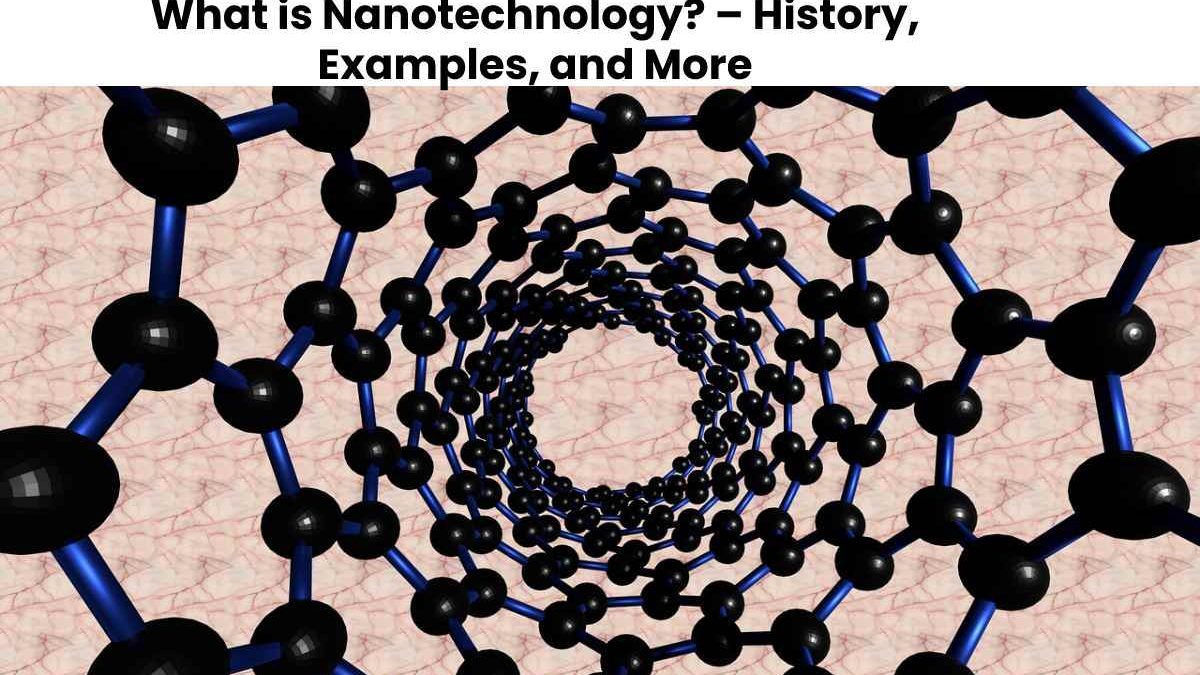Table of Contents
What is Nanotechnology?
Nanotechnology is the manipulation and fabrication of materials and artifacts at the atomic or molecular, i. H. nanoscale scale. It is a vast field of research and application that is still being consolidate.
Nanotechnology encompasses subatomic matter and specific knowledge from scientific disciplines such as organic chemistry, molecular biology, semiconductors, microfabrication, and surface science.
In short, nanotechnology is based on building microscopic machines, which are used to create new materials with a unique and particular molecular configuration.
History of Nanotechnology
In 1959 the option of nanotechnology and nanoscience was discusse for the first time. The first to refer to it was the Nobel Prize winner in Physics (1965), the American Richard Feynman (1918-1988), during his speech at Caltech (California, USA), in which he theorized synthesis through direct manipulation of atoms.
However, the term “nanotechnology” was coined in 1974 by the Japanese Norio Taniguchi (1912-1999). Since then, many have dreamed of or theorized about the possibility of these kinds of advanced machines and materials.
For example, American engineer Kim Eric Drexler (1955-) was instrumental in popularizing the term and this type of research. He was instrumental in formally beginning the field of nanotechnology study in the 1980s, reflecting the advances of the time in microscopy and the discovery of fullerenes in 1985.
What are Nanotechnologies Used for?
Nanotechnology is a type of materials engineering at the atomic or molecular level. It means that it is possible to manipulate matter on an infinitely small scale, between 1 and 100 nanometers, roughly between the size of a DNA molecule (2 nm) and that of a bacterium of the genus Mycoplasma (200 nm). .
Consequently, nanotechnology applications are virtually endless: from manipulating the chemical composition of living things, making it possible to alter and “program” the DNA of microscopic creatures to perform specific biochemical tasks, to creating new materials. And unique properties, so-called nanomaterials.
Applications of Nanotechnology
Some of the current applications of nanotechnology relate to:
Textile Industry
The creation of bright fabrics that can exhibit behaviors pre-programmed into chips or other electronic devices, such as being self-cleaning, stain-resistant, or able to change color and temperature.
Agricultural design
Development of controlled biochemical plant protection products, pesticides, and fertilizers for soil improvement, nanosensors for recording groundwater, nutrient concentration, etc.
Livestock Farming
Use nanoparticles to make vaccines and medicines for farm animal health or nanosensors that can alert to the presence of diseases, parasites, etc.
Nanopharmaceuticals
It is the first generation of pharmacological products developed with nanosystems. Capable of efficiently and precisely delivering the active ingredients of drugs, achieving better and faster results, and minimizing collateral damage.
On the other hand, the industry sees the following areas as future research areas:
nanoinformatics. The design of computational systems of tremendous power and speed using nanosystems.
nanothermology. Application of nanomachines for efficient and rapid local temperature regulation.
Nano energies. May they be efficient, safe, and green as a solution to the energy crisis beginning in the 21st century.
Environmental solutions. B. nanotechnological systems for hazardous waste or garbage disposal.
Examples of Nanotechnology
Here are some examples of the current application of nanotechnology to human problems:
Bactericidal Black Silicone
Australian and Spanish scientists have announced the creation of a material called “black silicon,” the molecular composition without additional products. Prevents the proliferation of many gram-positive and gram-negative bacteria species and reduces the efficacy of certain types of endospores.
Robotic Nanosurgery
Swiss laboratory ETH Zurich will test its first pleasingly exposed micro-robot. Similar models of micropumps have also remained tested in the United States, delivering medication to the eye when needed. Which confidences will make microsurgery without inaugural the patient, simply through injecting it into the body through a bit needle.
Nanotechnology in Medicine
The promise of nanotechnology to advance medicine is overwhelming. We’ve given a few examples above, but there’s still a lot to explore, such as:
Nano treatments for incurable diseases. Nanotechnological solutions for cancer, HIV/AIDS, or Alzheimer’s disease could come from biochemical robots injected into the human body.
Nanotechnology slows down aging. One day, we could use nanoparticles to fight aging at the molecular level and further extend our lifespan and delay senility.
Nano vaccines. Disease protection systems are based on the introduction into the body of nanosystems that would be responsible for supporting the immune system in the fight against all kinds of new diseases.
Genetic reprogramming. Thanks to nanorobots, it would be possible to modify our DNA and gradually eliminate the genes that transmit congenital diseases, malformations, and other diseases. It would improve the quality of life of the species in general. Of course, this also requires rethinking the moral laws of science.
Nanotechnology and Biotechnology
Biotechnology remains the application of technological solutions to biological problems. Thanks to the introduction of nanosciences, it reaches a whole new level.
The ability to program or reprogram living beings through the nanotechnology manipulation of DNA could allow us to direct life in more practical ways. However, the combination of biotechnology and nanotechnology carries significant ethical and biological risks.
Humanity knows all too well what happens when it tries to play God. For example, producing dairy cows with more meat, pest-resistant crops, etc., must always be accompanied by a reflection on our place in the natural world order.
Conclusion
Nanotechnology, also shortened to nanotech, uses matter on an atomic, molecular, and supramolecular scale for industrial purposes.
Also Raed: What is Netiquette and How to Follow The Basic Rules on the Internet


